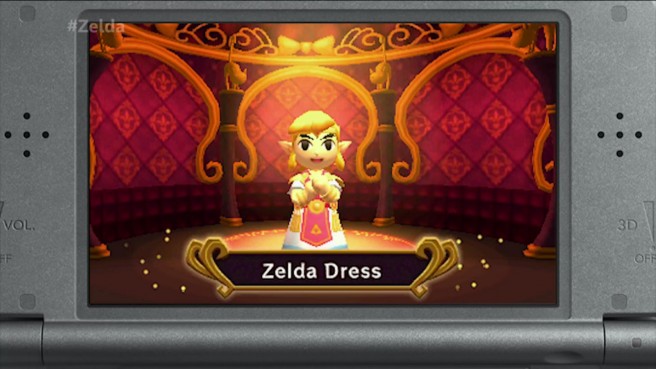Zelda: Tri Force Heroes – origins, letting Link wear a dress, lots of outfits, co-op, and communication
Polygon has posted a new interview with The Legend of Zelda: Tri Force Heroes director Hiromosa Shikata. Shikata addressed the project’s origins, shared further insight into Link being able to wear a dress, and commented on the co-op and communication elements.
Continue on below for a breakdown of Polygon’s piece. You can check out the site’s full article here.
On the game’s origins…
“I remember talking about it during the development of A Link Between Worlds. [We] had wanted to do more multiplayer Zelda … and in [Spirit Tracks] there’s a portion where you control the Phantoms. That element really intrigued me and brought out the idea that I wanted to try multiplayer as well.
“We really got started on it during development of A Link Between Worlds, that feeling of wanting to explore more multiplayer. It was sort of revitalized and came out of hibernation for me while I was working on A Link Between Worlds.”
– Shikata says outfits also reflect a sense of accomplishment
– A player’s available wardrobe will reflect their progress in the game
– Players craft their outfits from materials they find by clearing dungeons, turning Triforce Heroes into something of a loot-based grind
“It’s a cooperative game, but you may see a little competition.”
On letting Link wearing a dress…
“We consulted with folks here in the U.S. and in Japan, and asked ‘Do we think we’re going too much of a negative reaction by having Link wear a dress?'”
– The consensus was no, a cross-dressing Link wouldn’t be a problem
“For us as developers, the more variation we have, and that we can provide to players, the better for everyone.”
On how Shikata hopes that letting Link wear a dress will lure in a wider range of players…
“While there are a lot of aspects of Triforce Heroes that will appeal to young boys, we did think that by including outfits like the Legendary Dress that we would broaden that appeal to some of our younger female gamers as well.”
On the number of outfits…
“To get everything, that’s going to take some time.”
– Some outfit materials will only be available as part of the game’s colosseum
On single-player…
“With single-player, it’s a different experience than with two other players. There are more puzzle elements, as you’re not relying on someone else to help you control what to do.”
– Shikata noted that single-player can be more difficult than playing in local or online multiplayer, but some players seem to prefer it
– Shikata believes the game’s limited communication will make the game more enjoyable
“We could have implemented a more detailed or robust communication system. However, when you do that, I’ve seen many cases where you have a veteran player who really knows the game and they’re paired up with someone new and they’ll just say ‘Go here, do this, do that.’ They’re going to spoil the experience for the new gamer.
“We do have the eight emotion placards [and] we experimented with more and less. But when we tried that out online we found that to be sort of a sweet spot for us. There was some irritation but when you were able to use these to convey what you wanted, it’s such a wonderful feeling of accomplishment. We think it works really well.”
Shikata saying that players should try out both single-player and co-op…
“I think we’ve created two super fun experiences that are very different from each other. Even if you do have the ability to play with other friends, I want to encourage people to try online play.”
